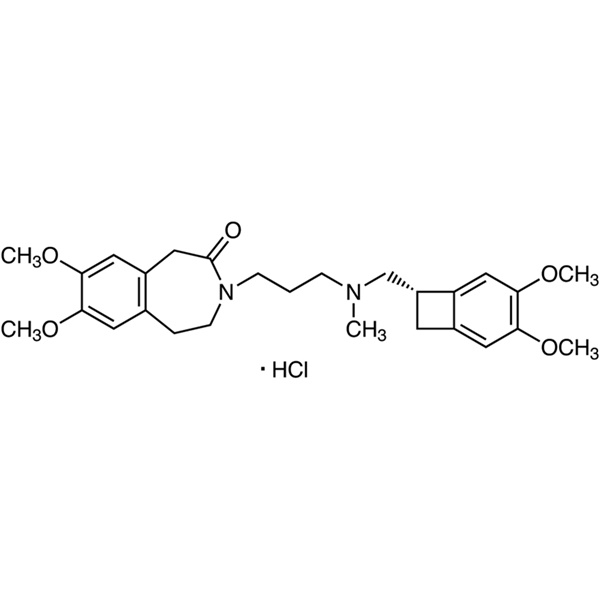Ivabradine Hydrochloride CAS 148849-67-6 Purity >99.5% (HPLC) API Factory
Ruifu Chemical Supply Ivabradine Hydrochloride Intermediates With High Purity
Ivabradine Hydrochloride CAS 148849-67-6
4,5-Dimethoxy-1-Cyanobenzocyclobutane CAS 35202-54-1
(1S)-4,5-Dimethoxy-1-[(methylamino)methyl]benzocyclobutane Hydrochloride CAS 866783-13-3
7,8-Dimethoxy-1,3-dihydro-2H-3-benzazepin-2-one CAS 73942-87-7
7,8-Dimethoxy-3-(3-iodopropyl)-1,3-dihydro-2H-3-benzazepin-2-one CAS 148870-57-9
3-(3-Chloropropyl)-7,8-dimethoxy-1H-3-benzazepin-2(3H)-one CAS 85175-59-3
| Chemical Name | Ivabradine Hydrochloride |
| Synonyms | Ivabradine HCl |
| CAS Number | 148849-67-6 |
| CAT Number | RF-PI1812 |
| Stock Status | In Stock, Production Scale Up to Tons |
| Molecular Formula | C27H36N2O5·HCl |
| Molecular Weight | 505.05 |
| Brand | Ruifu Chemical |
| Item | Specifications |
| Appearance | White to Off-White Crystalline Powder |
| Identification | HPLC/UV Complies |
| Purity / Analysis Method | >99.5% |
| Loss on Drying | <1.00% (Dry it at 105℃ in an electric air blowing dryer till a constant weight) |
| Moisture Content | <1.00% |
| Residue on Ignition | <0.20% |
| Max Single Impurity | <0.50% |
| Total Impurities | <0.50% |
| Optical Isomer | <0.50% |
| Assay | >99.5% |
| Heavy Metals | <20ppm |
| Specific Rotation | +6.5° ~ +8.5° (on dried basis, 1% solution in DMSO) |
| Test Standard | Enterprise Standard |
| Usage | API |
Package: Bottle, Aluminium foil bag, 25kg/Cardboard Drum, or according to customer's requirement
Storage Condition: Store in sealed containers at cool and dry place; Protect from light and moisture


Ivabradine Hydrochloride (CAS: 148849-67-6), In an effort to develop angina agents without the unwanted negative inotropic and hypotensive effects associated with b-adrenergic blockers and calcium channel blockers, a new class of heart-rate reducing compounds that act specifically on the sinoatrial (SA) node has been explored. These bradycardic agents interact directly with the pacemaking cell of the SA node and the hyperpolarization- activated If the primary pacemaking current. Ivabradine has evolved as a specific inhibitor of If current through its contact with f-channels on the intracellular side of the plasma membrane. As a consequence, Ivabradine reduces the speed of diastolic depolarization and decreases heart rate. It has been approved for the treatment of chronic stable angina and provides a viable alternative to patients with a contraindication or intolerance of b-blockers. Evaluation is also underway for the potential treatment of ischemic heart disease.
-
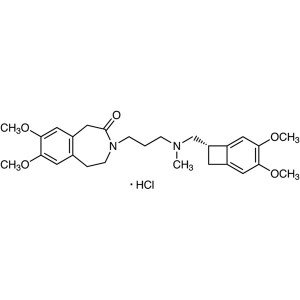
Ivabradine Hydrochloride CAS 148849-67-6 Purity...
-
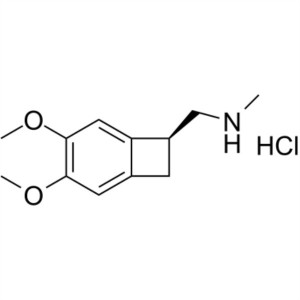
Ivabradine Hydrochloride Intermediate CAS 86678...
-
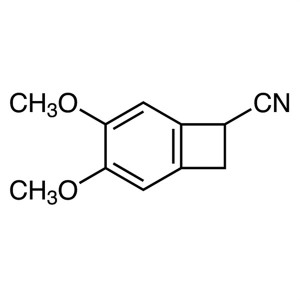
4,5-Dimethoxy-1-Cyanobenzocyclobutane CAS 35202...
-
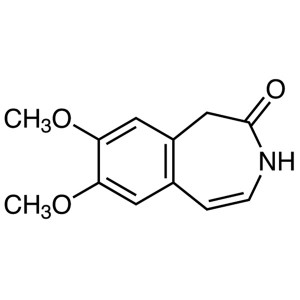
7,8-Dimethoxy-1,3-dihydro-2H-3-benzazepin-2-one...
-
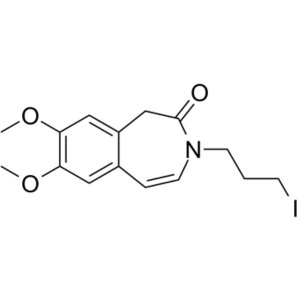
Ivabradine Hydrochloride Intermediate CAS 14887...
-
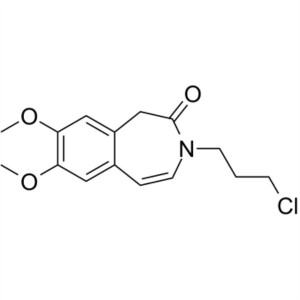
Ivabradine Hydrochloride Side Chain CAS 85175-5...

